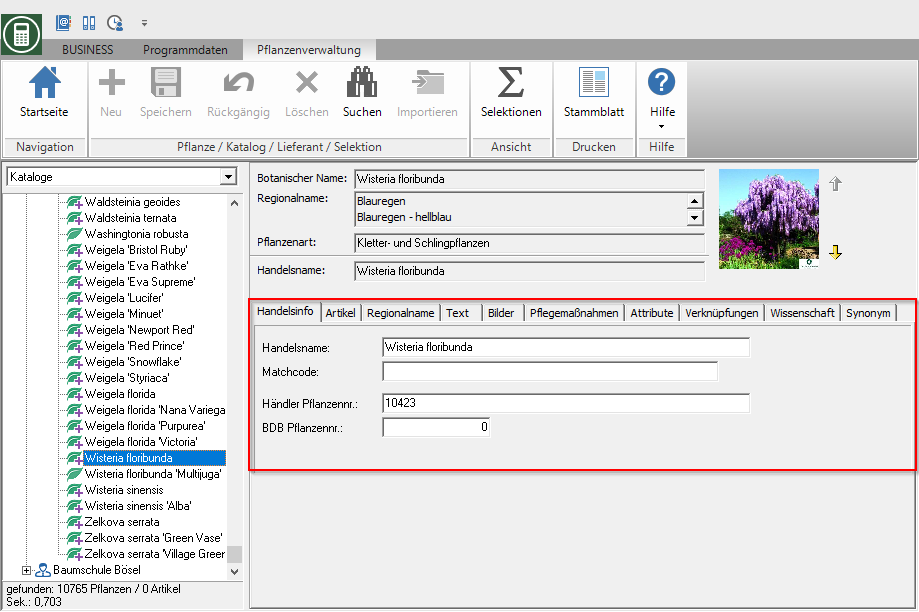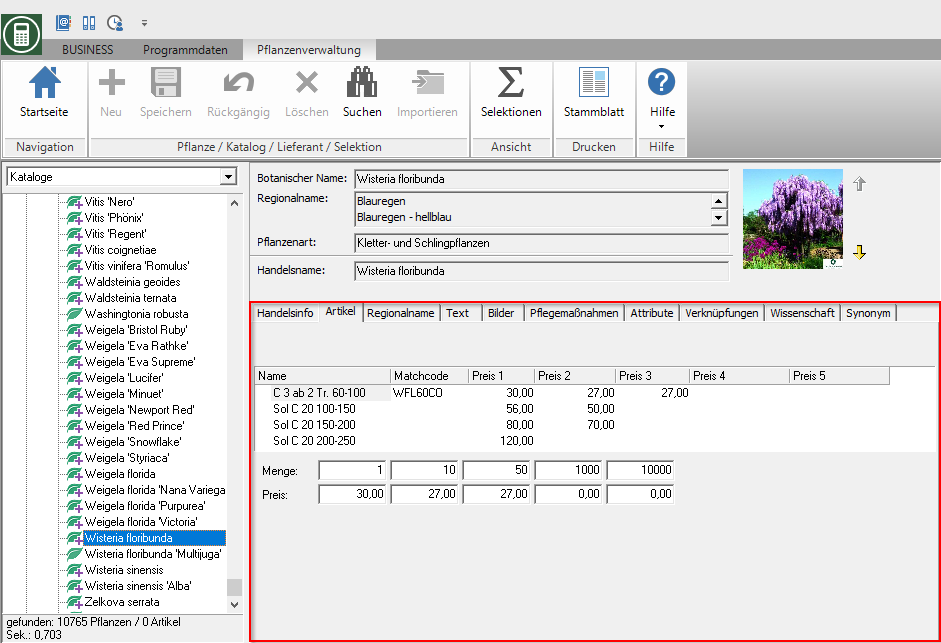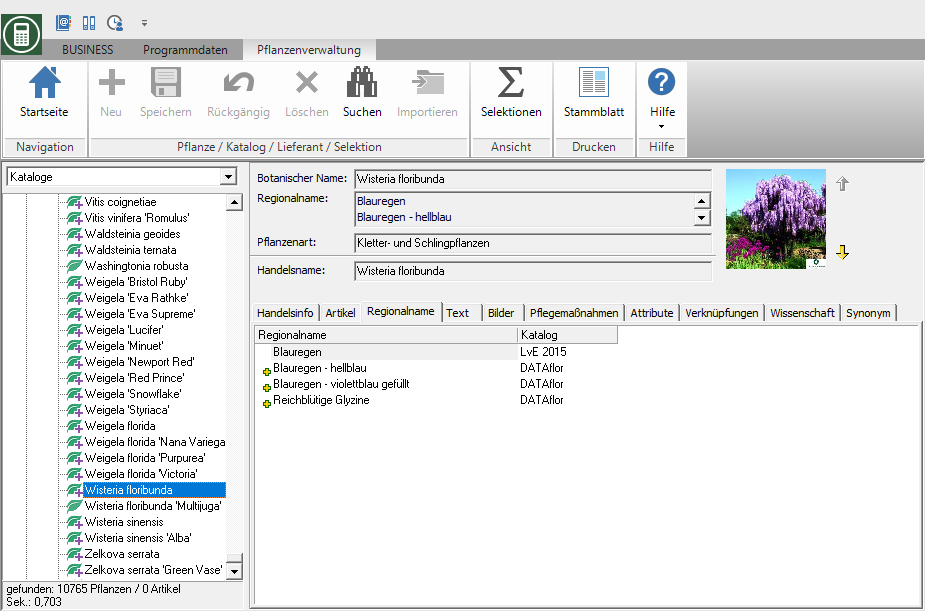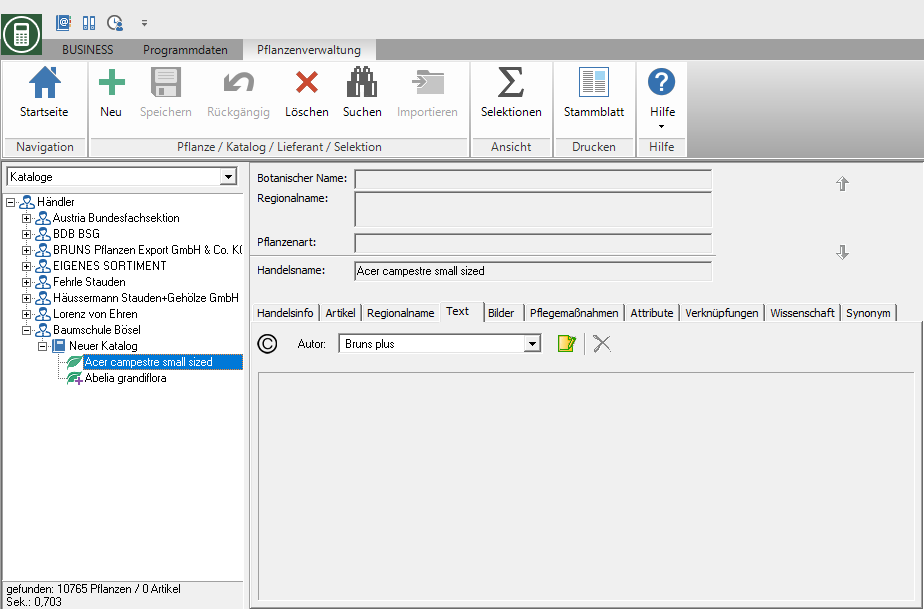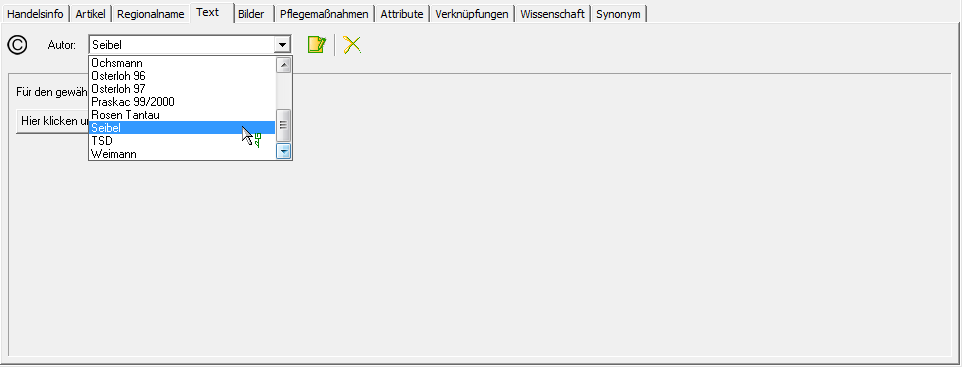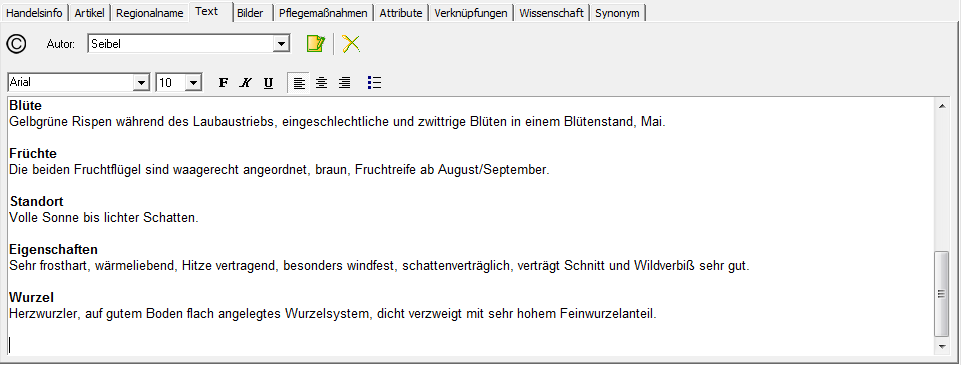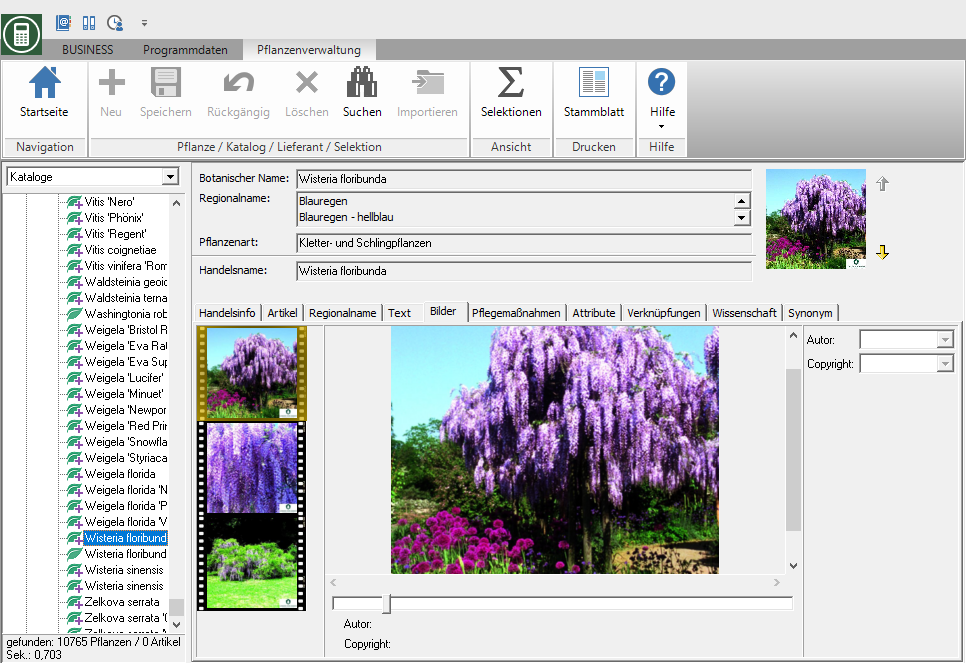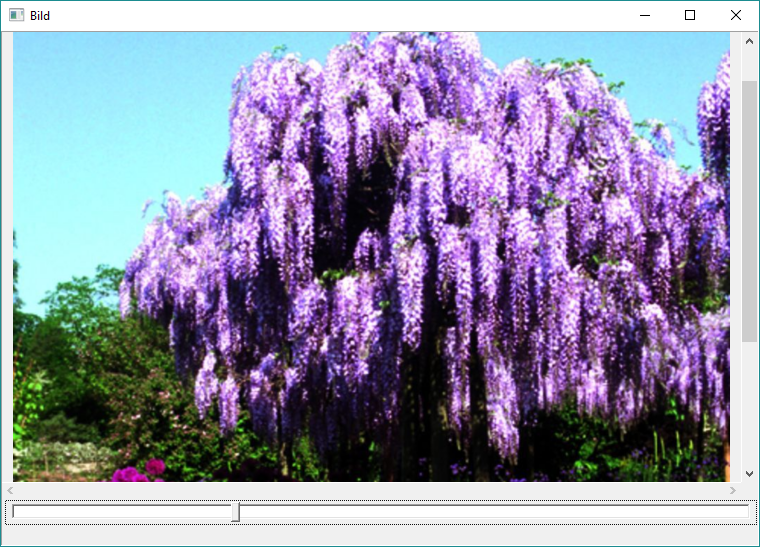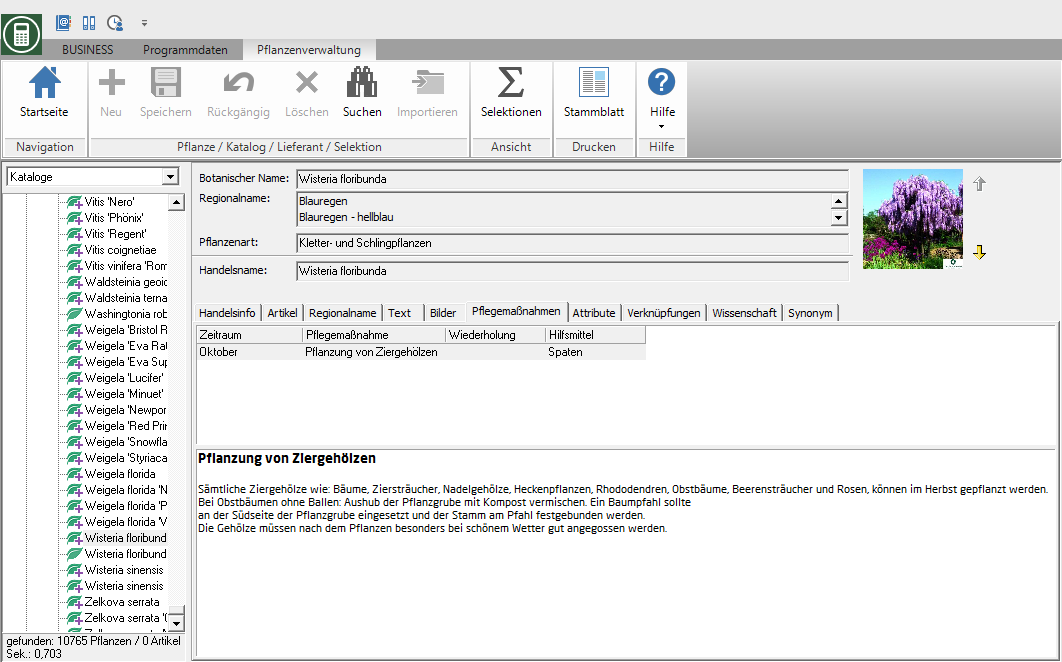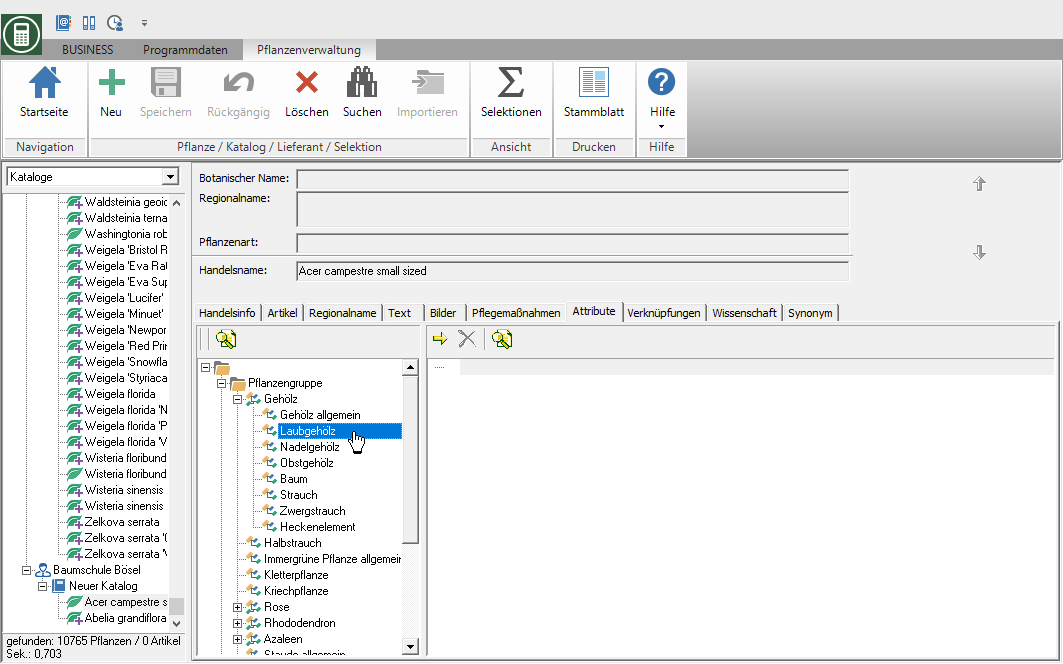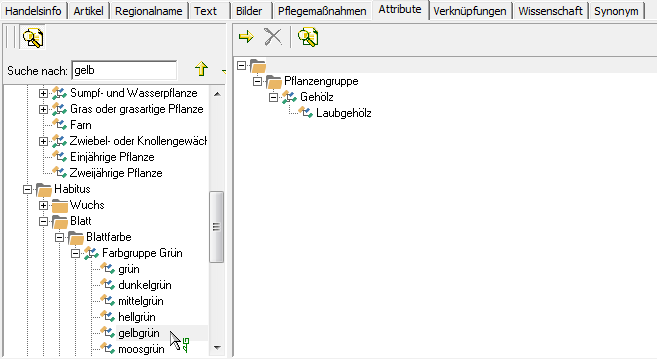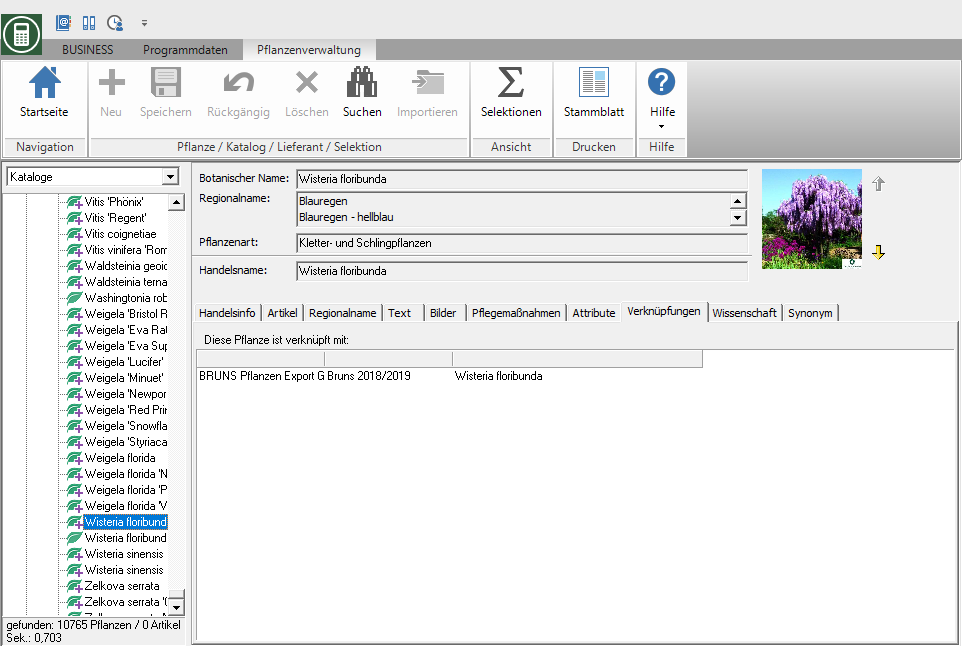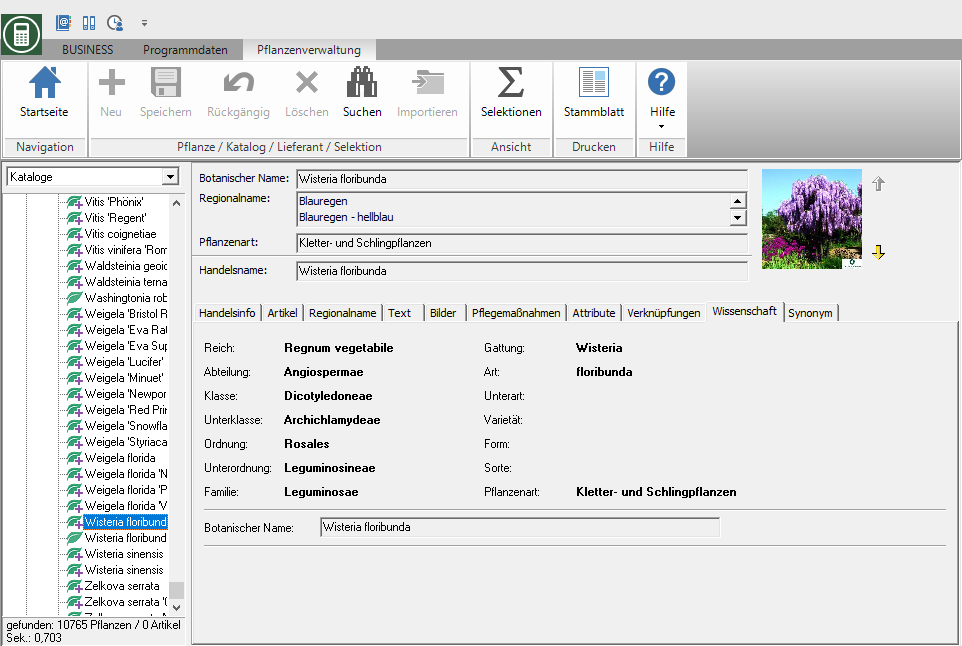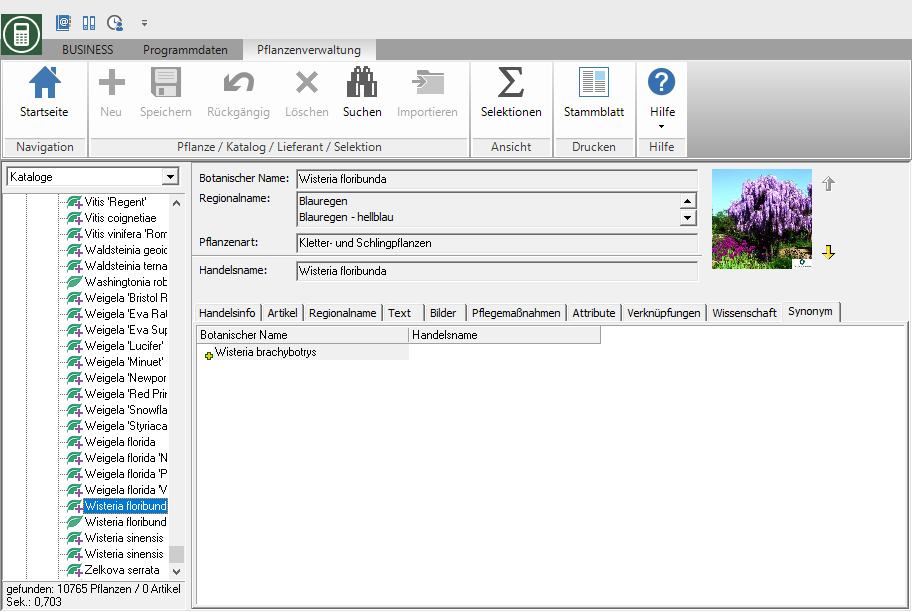Table of Contents
Plant master data
Description
As soon as you select a plant in the directory tree, the tabs appear on the right-hand side of the screen Trade info, Article, Regional name, text, Pictures, Maintenance measures, Attribute, connections, Science and synonym with the information of the plant available.
For plants in own catalogs the data can be edited.
For the import of various plant catalogs, see Import plant catalog a more detailed explanation.
General information about the plant is displayed in the upper area.
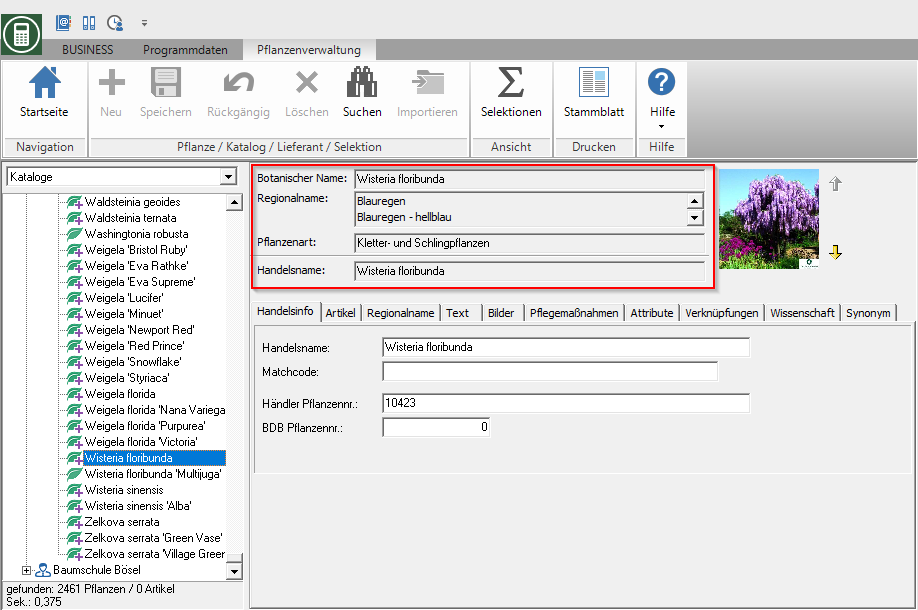
With the help of the arrow keys next to the plant picture you can select which plant picture is used for the printout of the plant picture list.
Trade info
On the tab Trade info store the supplier-related data of the plant.
Select the plant in the directory tree and open the tab on the right side of the screen Trade info.
Enter the following information:
trade name
Enter the name under which the plant is traded here. This is also used in further processing in the program (e.g. name of the plant in the LV).
With copied plants, however, make sure that the plant species (scientific classification, botanical name) is not influenced by changing the trade name.
matchcode
Store a matchcode here that you can use, for example, in the plant search dialogs to find the plant. By clicking ![]() automatically generate a matchcode from the trade name.
automatically generate a matchcode from the trade name.
Copied plants retain their matchcode as default, so that when searching for matchcode, both the original plant from the original catalog and the copied plant can be found.
Dealer plant no.
If necessary, store the specific plant number (similar to article number) of the dealer for the plant in this catalog.
BDB plant no.
For DATAflor In the plant catalogs provided, the BDB plant number can also be stored for extended functions.
Article
On the tab Article store the article information (quality, matchode, graduated prices) of the plant.
Select the plant in the directory tree and open the tab on the right side of the screen Article.
The following functions are available for entering the information:
| Create a new item record for editing in the table. | |
| Öffnen Sie die Plant search to take over articles (qualities and prices) from other plants. The matchcode of the transferred article is based on the matchcode on the tab Trade info automatically regenerated. | |
| Delete the marked item data record in the table. | |
| Move the selected item data record up one line. The order of the articles is also taken into account in the search dialogs, so that you can use the order to control your access to articles that you need more frequently. |
|
| Move the selected item data record one line down. |
After clicking in the desired field (name, matchcode, price 1 etc.) you can edit the selected entry. By TabKey to move line by line to the next field.
In the columns Price 1 up to Price 5 store the graduated prices of the qualities. Make sure, however, that you have also stored quantities for graduated prices so that graduated prices apply. In the lower area of the mask you will find the graduated quantity data of the selected article.
When a new article is created, the scale quantity specifications of the catalog are adopted. However, you can adjust these individually for each article (quality). In the case of copied plants, the graduated quantities of the original article are adopted.
Regional name
On the tab Regional name store additional names for the plant. The first entry is also adopted when plants are adopted in LV. As additional information, you will be shown which information source or catalog the regional name comes from.
Select the plant in the directory tree and open the tab on the right side of the screen Regional name.
With ![]() and
and ![]() you can create or delete additional regional names for your own plants (but not additional regional name information,
you can create or delete additional regional names for your own plants (but not additional regional name information,  Plus sign).
Plus sign).
Regional names that you have created yourself are placed in front of regional names that come from additional information (plus signs). This means that your desired name is always transferred when you transfer it to the course.
text
On the tab text some information from various authors is displayed on the plants in the BRUNS catalog. To own plants you can store your own texts. The stored texts are then available in the course for printing out the Plant picture list and for expression Plant stem leaf is available for storage, management and analysis.
Select the plant in the directory tree and open the tab on the right side of the screen text.
Example: plant from BRUNS catalog
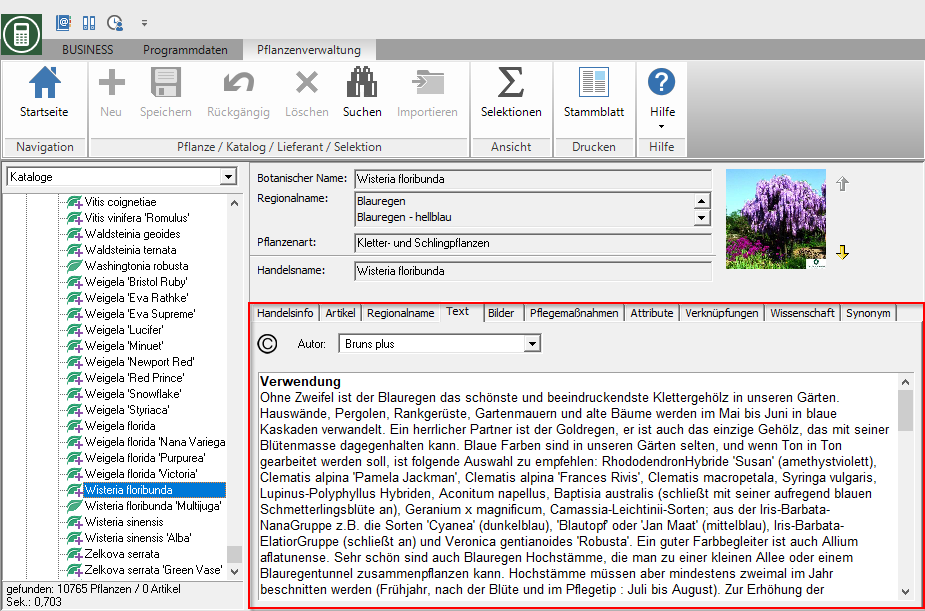
To create a new author, click on the tab text on ![]() .
.
The following window for storing authors opens.
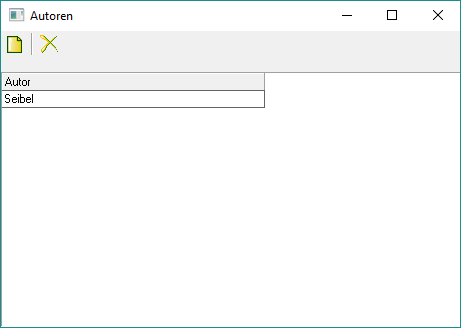
With ![]() or
or ![]() you can create new authors (e.g. your company). The deletion of authors is only possible if all texts recorded for this author are deleted at the same time (after a security query). Confirm your entry with Enter and close the window.
you can create new authors (e.g. your company). The deletion of authors is only possible if all texts recorded for this author are deleted at the same time (after a security query). Confirm your entry with Enter and close the window.
The registered authors are now available for text entry for all of your own plants, so that you only have to define authors once.
To save your own text, choose from the selection Author by clicking ![]() one of your defined authors.
one of your defined authors.
If there is no text on the selected author, you can create it by clicking on Click here to create a new text. Enter your own text about the plant. For text formatting, the common functions such as setting the font, font size, bold, etc. are also available in the toolbar.
You can store a separate text for each author.
You can remove an existing text by clicking on ![]() .
.
Pictures
On the tab Pictures all pictures of the plant are displayed by the expanded DATAflor-Information (plus sign) is available. To own plants you can add your own pictures.
Select the plant in the directory tree and open the tab on the right side of the screen Pictures.
Click the image you want in the image bar to see an image more closely in a large display.
Use the slider below to adjust the size of the image to suit your viewing requirements. Close the large display by clicking on the picture again.
By clicking ![]() and
and ![]() add your own pictures or delete them. The image files are copied to the storage folder in the catalog.
add your own pictures or delete them. The image files are copied to the storage folder in the catalog.
The BUSINESS Installation DVD contains the BRUNS plant pictures. These are installed by default and updated automatically.
The images are copied to the computer on which you start the installation, ie:
- If you install the plant pictures on the server, the pictures are available at all workstations.
- If you install the plant pictures at a workstation, you will only have access to the plant pictures at this workstation.
Maintenance measures
On the tab Maintenance measures Seasonal information about plant care is displayed. This information is available for the printout of the plant stem sheet.
Select the plant in the directory tree and open the tab on the right side of the screen Maintenance measures.
Attribute
On the tab Attribute the characterizing information (habitus, use, etc.) of the plant is displayed. To own plants define the attributes yourself. Then the attributes are in the Plant search available as a search criterion.
Select the plant in the directory tree and open the tab on the right side of the screen Attribute.
Example: plant from BRUNS catalog
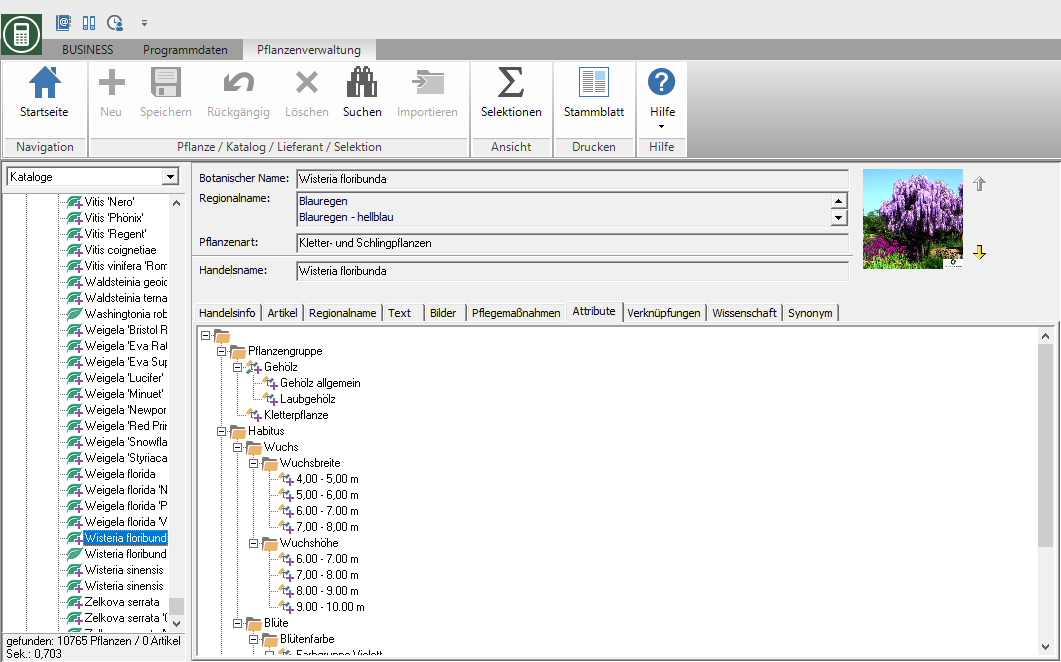
With your own plants, all available attributes are displayed in a directory tree on the left side of the tab. The attributes assigned to the plant are listed on the right.
To add an attribute, mark it in the attribute tree on the left and click on ![]() .
.
To delete an attribute, mark it in the attribute tree on the right and click on ![]() . The attributes that the additional DATAflor-Information (with plus sign
. The attributes that the additional DATAflor-Information (with plus sign ![]() ) are defined cannot be deleted. Own assigned attributes can be deleted.
) are defined cannot be deleted. Own assigned attributes can be deleted.
Within the attribute trees you can click on ![]() open or close the search in the attributes. To search, enter a search term in the field search for a. The data record pointer positions itself automatically on the first data record found with every keyboard entry.
open or close the search in the attributes. To search, enter a search term in the field search for a. The data record pointer positions itself automatically on the first data record found with every keyboard entry.
Switch to the next or previous data record in the search result by clicking on ![]() or
or ![]() .
.
connections
On the register connections you can see which plants from other catalogs are linked to this plant. By double-clicking on an entry, you automatically switch to this plant. At own catalogs Links to other catalogs are only made if the plant was created by copy.
Select the plant in the directory tree and open the tab on the right side of the screen connections.
Science
On the register Science the scientific and botanical data on the plant are displayed. This classification is, for example, the basis for the view Plant species in the view tree of the plants.
Select the plant in the directory tree and open the tab on the right side of the screen Science.
These data cannot be edited (an Acer campestre cannot scientifically be made into a Betula nana, even if the trade name was changed accordingly).
If you use the plant copy function when creating your own plants, the scientific assignment is made automatically (from the original plant). This assignment is invariably missing in the case of manually created plants.
synonym
On the register synonym all plant synonyms for the plant are displayed. Synonyms are not displayed in the view tree.
Select the plant in the directory tree and open the tab on the right side of the screen synonym.

